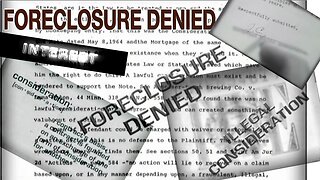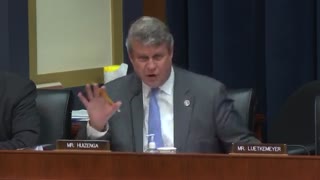Banks will be pressured by Governments to foreclose on overleveraged clients, prediction video
Foreclosure is a legal process through which banks and other lending institutions repossess and sell properties when borrowers default on their mortgage payments. This complex procedure involves multiple steps and varies from one jurisdiction to another. In this detailed explanation spanning 1211 words, we will delve into the foreclosure process, exploring its key elements and the rights and responsibilities of both borrowers and lenders.
1. Mortgage Agreement and Default:
Foreclosure begins with a mortgage agreement between a borrower and a lender, typically a bank. This agreement outlines the terms and conditions of the loan, including the interest rate, repayment schedule, and the consequences of failing to make timely payments. When a borrower defaults on their mortgage by missing multiple payments, they breach the contract.
2. Notice of Default:
The first step in the foreclosure process is the issuance of a Notice of Default (NOD) by the lender. This formal document informs the borrower that they are in violation of their mortgage agreement due to missed payments. The NOD specifies the amount owed, the deadline for payment, and the intention to initiate foreclosure if the debt remains unpaid.
3. Grace Period and Reinstatement:
After receiving the NOD, the borrower typically has a grace period during which they can remedy the default by paying the overdue amount, including any applicable fees and interest. This process is known as reinstatement, allowing borrowers to bring their mortgage current and avoid foreclosure.
4. Pre-Foreclosure Period:
If the borrower fails to reinstate the loan or reach a new agreement with the lender, the property enters a pre-foreclosure phase. During this time, the lender may engage in several actions:
a. Notice of Sale: In some states, lenders are required to issue a Notice of Sale, which sets a date and time for a foreclosure auction. This notice is publicly recorded and published to inform interested parties about the impending sale.
b. Foreclosure Counseling: Some jurisdictions mandate that borrowers receive foreclosure counseling during this period. Non-profit organizations and government agencies often offer counseling services to help borrowers explore alternatives to foreclosure.
c. Short Sale or Loan Modification: In certain cases, borrowers may negotiate with the lender for a short sale or loan modification. A short sale involves selling the property for less than the outstanding mortgage balance, with the lender's consent. A loan modification involves altering the loan terms to make it more manageable for the borrower.
5. Foreclosure Lawsuit (Judicial vs. Non-Judicial Foreclosure):
The foreclosure process diverges depending on whether the state follows a judicial or non-judicial foreclosure system.
a. Judicial Foreclosure: In judicial foreclosure states, the lender files a lawsuit against the borrower in court. This initiates a legal process where the court oversees the foreclosure proceedings. The borrower has the right to respond to the lawsuit, and a judge ultimately decides whether foreclosure is justified. If the court approves the foreclosure, it will issue an order for the property's sale.
b. Non-Judicial Foreclosure: In non-judicial foreclosure states, lenders do not need to go through the court system. Instead, the foreclosure process is governed by the power of sale clause in the mortgage contract. The lender must follow strict statutory procedures, including sending notices to the borrower and conducting a public auction to sell the property.
6. Notice of Sale and Auction:
In states with non-judicial foreclosure, the lender must provide notice of the pending foreclosure sale to the borrower and the public. This typically includes posting notices in newspapers and on the property. The notice specifies the date, time, and location of the foreclosure auction.
7. Foreclosure Auction:
The foreclosure auction is a public event where the property is sold to the highest bidder. Bidders can include investors, other lenders, or interested individuals. The property is usually sold "as-is," and the winning bidder is required to pay in cash or with a cashier's check. The auctioneer may set a minimum bid, known as the reserve price, which must be met for the sale to proceed.
8. Redemption Period:
Some states offer a redemption period after the foreclosure sale, during which the borrower can reclaim the property by paying the winning bid amount plus any additional fees and interest. This period varies by state and can range from a few days to a year.
9. Eviction and Possession:
If the property is not redeemed during the redemption period, the winning bidder or the lender may take possession. In some cases, this may require eviction proceedings to remove any occupants or tenants from the property.
#mikemartins #mikeinthenight
-
 7:48
7:48
hauseit
4 years ago $0.02 earnedA Co-op Foreclosure Explained
220 -
 2:39
2:39
benjaminzmiller
1 year agoHow can I stop a bank from foreclosing on a property?
13 -
 4:19
4:19
RAVries
1 year agoFORECLOSURE DENIED - HOW TO STOP THE COUNTERFEITING BANKING MAFIA FROM FORECLOSING ON YOUR HOUSE!!
765 -
 4:58:50
4:58:50
R.C. Davis
1 year agoU.S. House Committee on Financial Services: Consumers First: Semi-Annual Report of the Consumer Financial Protection Bureau
197 -
 6:27
6:27
Anna Von Reitz Article Videos
5 months agoArticle Video - International Public Notice: HR5404 and Why Banks Are Collapsing By Anna Von Reitz
1.06K6 -
 6:06
6:06
hauseit
4 years agoThe Unique Foreclosure Process in New York and How Long it Takes
82 -
 21:20
21:20
Anna Von Reitz Article Videos
1 year agoArticle Video - The National Debt Fraud Revisited - Tuesday, May 23, 2023 By Anna Von Reitz
189 -
 7:02
7:02
Car Coach Reports
3 months ago $0.06 earnedPrepare For A Wave Of Car Repossessions - Financial Crisis Alert!
1623 -
 26:55
26:55
MichaelBordenaro
1 year agoForeclosure Starts SURGE 187% - Pre Pandemic Levels (Warning!)
5 -
 25:46
25:46
REIMastermindNetwork
1 year agoUnleashing the Power of Credit Unions: The Hidden Financing Solution for Real Estate Investors
89